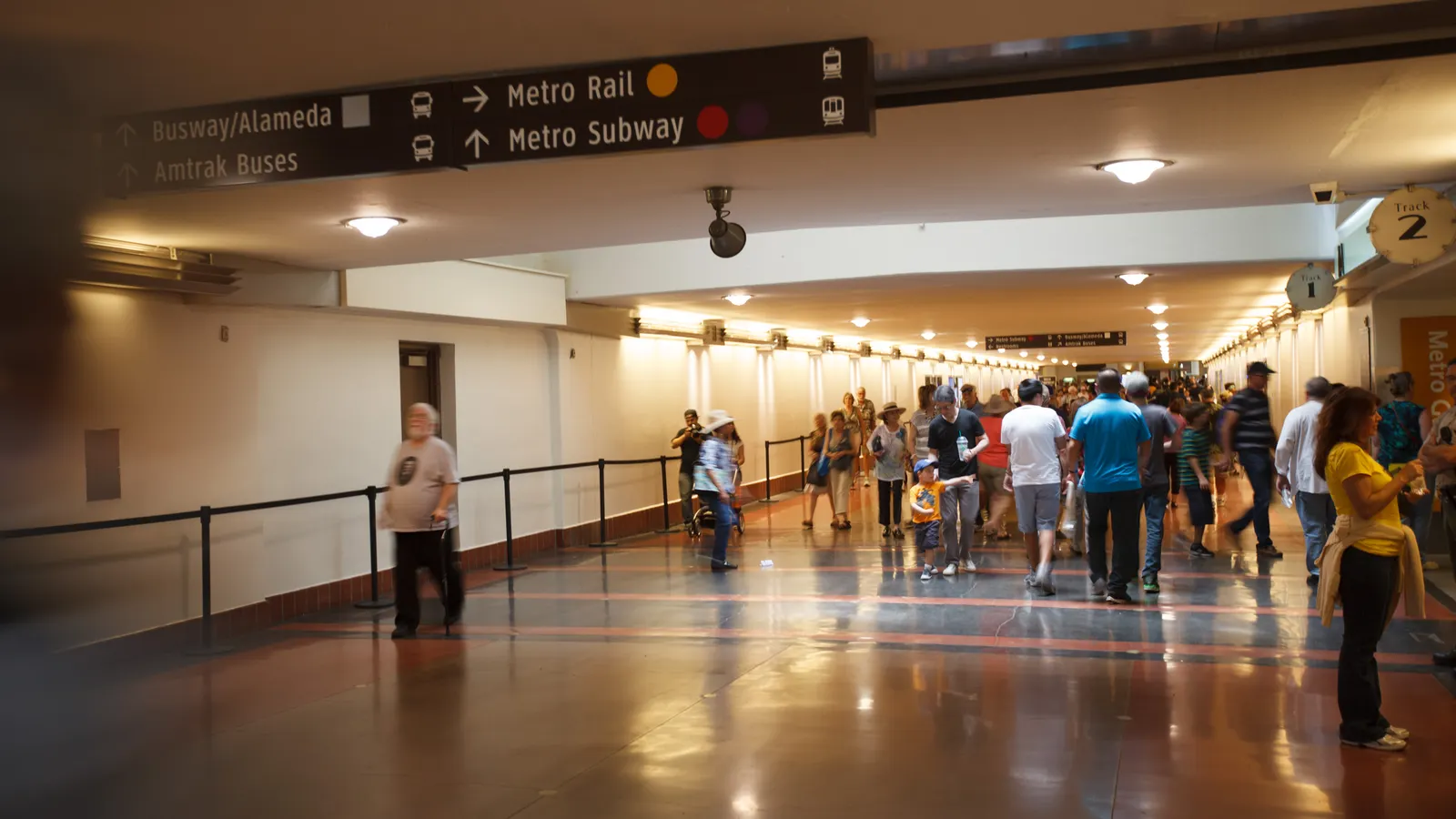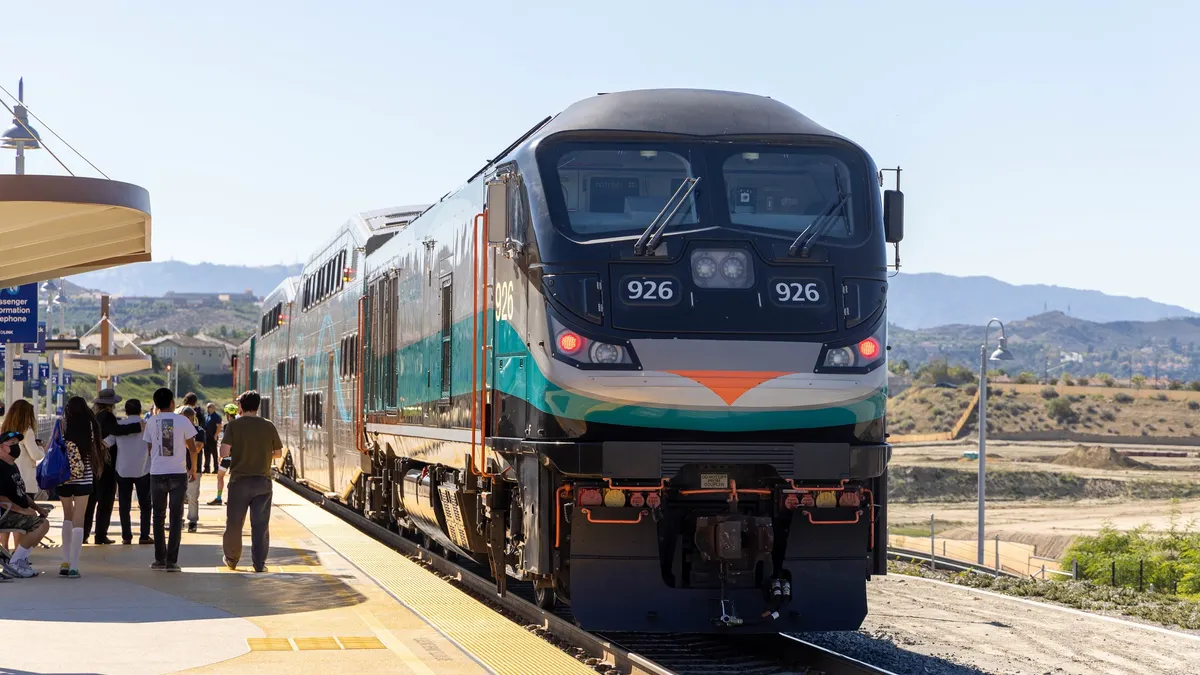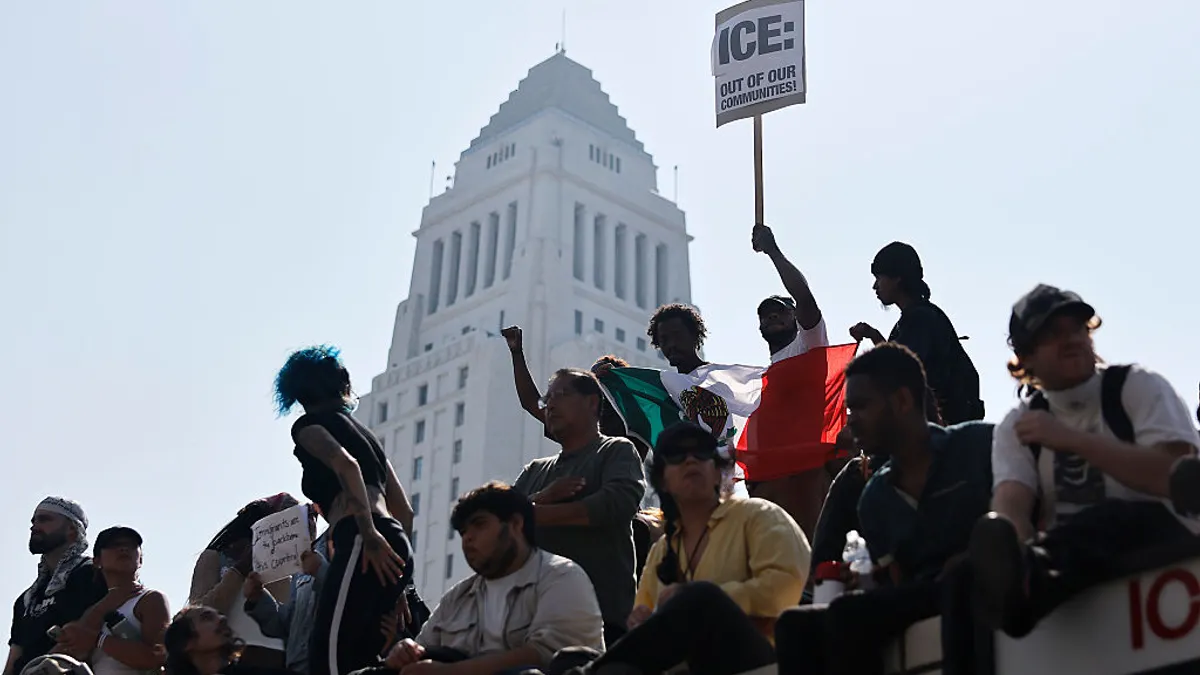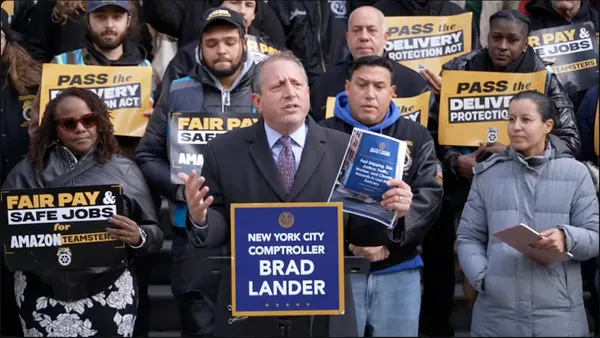Metrolink, the sprawling regional rail system serving six Southern California counties, will reset its fare structure July 1 in an attempt to restore ridership and revenue.
The COVID-19 pandemic decimated Metrolink’s ridership as it did for many other commuter railroads. Metrolink’s average weekday boardings dropped 85% from an average of almost 869,000 in the last quarter of 2019 to just over 125,000 in the first quarter of 2021. Revenue also took a hit: In Metrolink’s 2019 fiscal year, fare revenues accounted for 40% of operating expenses. Today, the farebox recovery ratio sits at about 15%, Metrolink Chief Executive Officer Darren Kettle said in an interview.
Instead of raising fares, Metrolink will simplify them to match new travel patterns. Most riders’ fares will go down, Kettle said. The railroad is doing away with round-trip tickets, seven- and 10-day passes and its student adventure pass. In their place will be a new one-day, unlimited ride pass, a five-day pass that can be used anytime within 30 days and a monthly pass suited for those who commute at least three days a week.
For riders traveling within a zone around central Los Angeles, a $5 day pass will provide unlimited rides and free transfers to public transit in Los Angeles County.
“We knew the old way of doing business wasn't working,” Kettle said, adding that Metrolink’s governing body wasn’t happy.
The Southern California Regional Rail Authority oversees Metrolink, with board members from each of the five member transit agencies: the Los Angeles Metropolitan Transportation Authority, Orange County Transportation Authority, Riverside County Transportation Commission, San Bernardino County Transportation Authority and Ventura County Transportation Commission.
Kettle said the first order of business is to restore ridership, “and if we do it well and we put a quality product out there, the revenue is going to come with it.”
Metrolink’s first step was a system-wide schedule change in October 2024. The railroad added 32 weekday trains, increased the number of midday trains and improved connections among its seven lines. “It was the single largest change in our system's history,” Kettle said. “We've seen ridership respond.”

All but one of Metrolink’s lines, which include 67 stations along 437 route-miles, reach Los Angeles Union Station in the heart of downtown LA. DTLA, as locals know it, is home to more than 90,000 residents and a skyline of office and hotel towers. While residential occupancy is over 90%, office vacancy rates soared from the low teens in 2019 to over 30% in 2025, according to data from the DTLA Alliance, a coalition of property owners in the central business district of downtown Los Angeles.
LA Union Station provides connections to Amtrak, LA Metro’s subway and light rail lines, transit and intercity buses and an express bus to Los Angeles International Airport. With Metrolink’s added train service and updated fares, Kettle sees an opportunity for residents and visitors to experience Southern California without a car.
“It's a quality of life experience for people to be on trains,” Kettle said. He envisions greater access to affordable housing and lower-cost homes. “Those are the kinds of things that we see our fare structure and our new service model will support.”
LA Mayor Karen Bass said she wants a “no-car Games” when Los Angeles hosts the 2028 Olympics. “The best legacy we can leave is that people will see in Southern California [that] you can use public transit to get around this region,” Kettle said.
For now, though, the new fare structure is a six-month pilot program. If it meets the agency’s ridership and revenue goals, it could become permanent, Kettle said. That could lead to more weekend and daily trains, he said.
Correction: We have updated the headline and text of this article to correct the number of counties Metrolink serves. It serves six counties.












